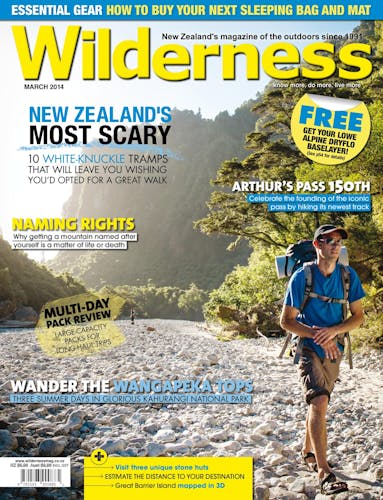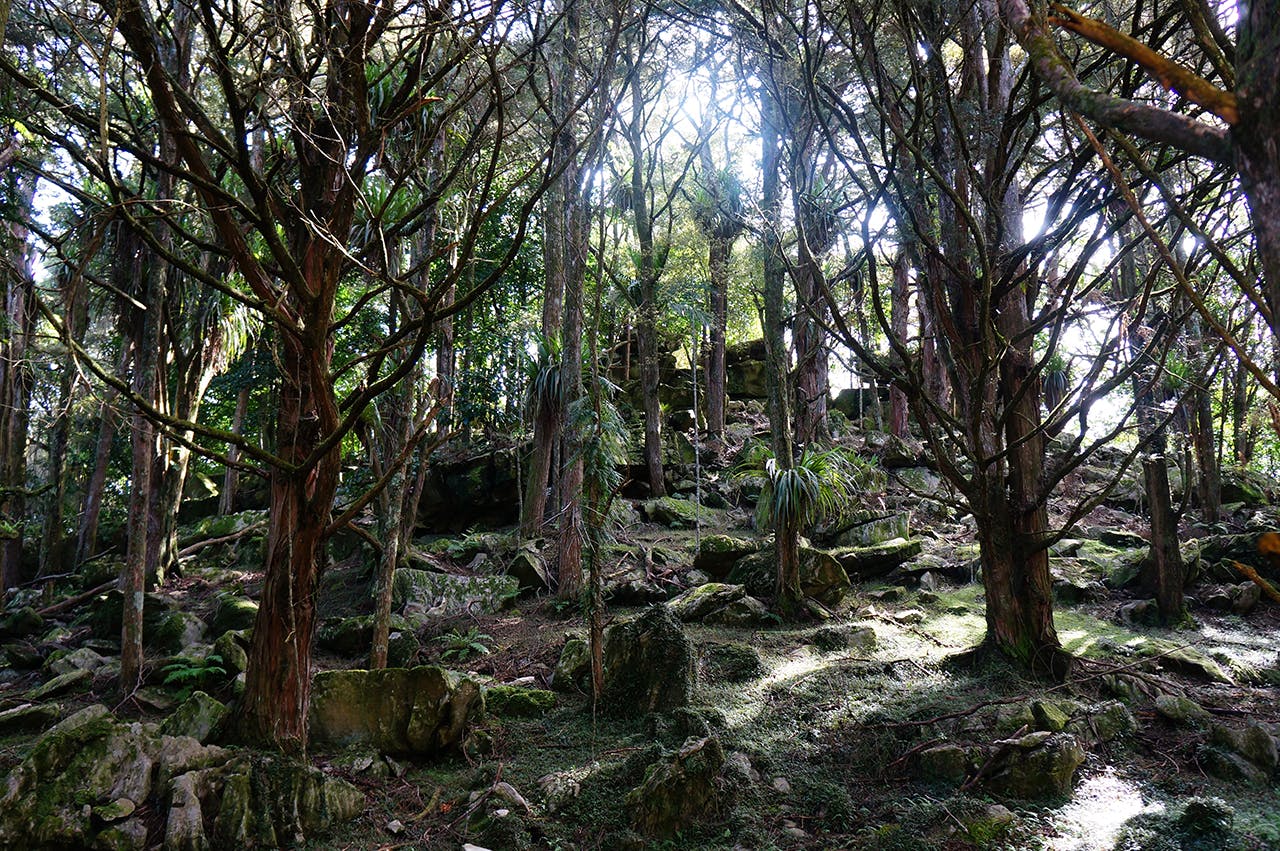- Time
- 2hr
- Grade
- Easy
- Access
- From the Waipu Caves or Ormiston Road car parks
- Map
- AX30
- GPX File
- Waipu Caves (gpx, yo 5 KB)
- Your device does not support GPX files. Please try a different device.
Waipu Caves Walk, Waipu Caves Scenic Reserve
It was almost other-worldly: we were surrounded by looming trees dripping with moss, sunlight dappling the ferns and rocks of the forest floor. The air felt completely still, the buzz of the city a shadow of a memory away.
We were at Waipu Caves Scenic Reserve, off SH1 south of Whangarei. We had started the track at the Waipu Caves Road end and crossed a boggy paddock of cows, with long mud socks, to get to the caves. A short slippery scramble inside, and our headlamps illuminated swallows, stalactites and eels cruising the underground river. It’s possible to explore the caves via the river and emerge 175m downstream, but we were without wetsuits and I was the only one of us prepared to get wet. So we clambered out past the glow worms and into the karst landscape outside. The track crossed the stream and climbed through the moss-laden bush amongst massive craggy boulders. The land was forested in giant and in miniature – huge trees filtered out the light, and the ground was carpeted with tiny green umbrellas.
The track led us out of the bush and up the ridge where we were surrounded by ti tree and yellow-flowering gorse, looking back across farm paddocks dotted with marshes and stands of totara.
At the ridgeline the view opened up to the Whangarei Heads and the Hen and Chicken Islands. The track dropped down to the Ormiston Road end through farmland. There were several branches off the track, but it was easy to see that they all headed back towards the stream, so on the way back we took a slightly different route. This led through stacks of huge limestone boulders. The boulders had been carved out in wavy runnels by carbonic acid dissolved in rainwater, a process called karstification that formed this whole unique landscape. Runnels and flutes etched into the boulders are small features of this. Bigger features include sinkholes, underground drainage systems and the cave and cavern system we visited earlier.
Ferns sprouted from logs and crevices, and creepers spilled over rocks in dark and glowing emerald green. I spotted a gleam in the deep leaf litter and scooped up a handful of glossy shell. Nearly eight centimetres across, it was from a kauri snail, an endangered giant carnivorous native snail. The shell was thick and solid like a seashell, striped in shiny brown and gold. I left it in the bush, as snacking on the lining of their dead friends’ shells is the main way the remaining snails get calcium.
Back at the car park, there was a toilet block with an outdoor shower on the exterior wall, which we used to wash off the mud.
This is a great walk to do on the way to Whangarei or as a half-day trip from Auckland. Make sure you bring a headlamp or torch for the caves.
– Vanessa James







